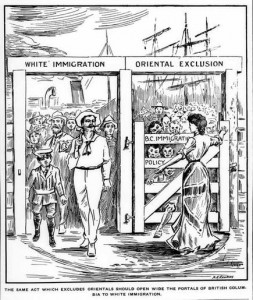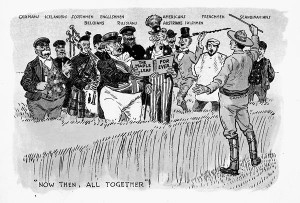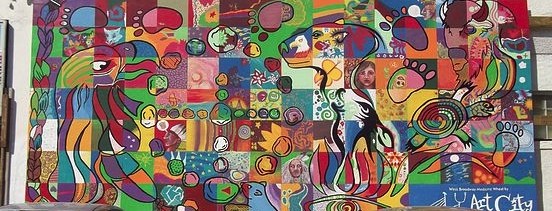“2]… For this blog assignment, I would like you to research and summarize one of the state or governing activities, such as The Royal Proclamation 1763, the Indian Act 1876, Immigration Act 1910, or the Multiculturalism Act 1989 – you choose the legislation or policy or commission you find most interesting. Write a blog about your findings and in your conclusion comment on whether or not your findings support Coleman’s argument about the project of white civility.” (Paterson, “Lesson 3.1”)
The Chinese Immigration Act of 1885 was “the first piece of Canadian legislation to exclude immigrants on the basis of their ethnic origin” (Van Dyck, “The Chinese Immigration Act, 1885”), and was one that “placed a head tax of $50 on any Chinese coming into Canada” (Holland, 152). Other amendments were as follows:
- Chinese Immigration Act of 1900 – Canadian Government raises head tax to $100
- Chinese Immigration Act of 1904 – Head tax is raised to $500
- Chinese Immigration Act of 1923 – Most Chinese immigration to Canada is banned until the Act’s repeal in 1947
It is of note that no other race of people had such heavy-handed immigration restrictions placed on them through legislation as was placed on those of Chinese descent. Certain restrictions placed on incoming cargo/passenger ships were quintupled for immigrants of Chinese descent, with “one immigrant for every fifty tons of its tonnage” (Statutes of Canada as quoted by Van Dyck) as opposed to one immigrant for every two tons of weights for ships carrying European immigrants.
(For further information on these policies, I direct curious readers to such excellent sources as can be found here and here, should you wish to delve into the subject in detail.)
It is helpful to consult primary sources to gauge British Columbians’ sentiments (circa 1907) on the matter of Chinese immigration. The following quotations come from the Saturday Sunset a Vancouver-based paper in production from 1907 – 1915, described as “…not aligned with any particular political party, [and] instead taking up issues across the political spectrum” (Vancouver Public Library, “The Chinese Experience in British Columbia: 1850 – 1950”).
Saturday Sunset journalist N.H. Hawkins wrote:
“A nation should be an aggregation of people who will defend and preserve its free institutions, who will maintain the purity of its race, who will not allow its children to be contaminated with that which degrades or reduces the standard of their ideals of citizenship. In not one single particular can it be claimed that an Oriental community in Canada will assist or promote any of these elements of nationhood in the land of the Maple Leaf.”
(“The Same Act Which Excludes Orientals…”)

“The Same Act Which Excludes Orientals Should Open Wide The Portals of British Columbia To White Immigration” – McConnell, Saturday Sunset, 1907
Do these findings support the project of white civility as argued by Coleman? Absolutely. Looking at the above quotation, we see white civility in the guise of an “aggregation of people” guarding against “that which degrades or reduces…ideals of citizenship”. English Canadianness is white largely due to the myriad of policies enacted to preserve the civility of the Canadian nation. These policies are rationalized as acts of protection for ‘civil’ standards necessary for successful white nation building. One only has to look at the political cartoon by McConnell (see left) to see how white civility is portrayed by well-dressed, largely masculine White immigrants in contrast to the animalistic, crowded, ambiguous and threatening looking Oriental immigrants. Indeed, Hawkins writes that “[t]he development of the country depends as much – more so – upon the importation of white labour as it does upon the exclusion of the Oriental” (emphasis added, “The Same Act Which Excludes Orientals…”).
I’m interested also in the junction between gender and race in the project of white civility. Like the women who lost their First Nations status once they married non-Status partners, Chinese women who married non-Chinese men were not considered Chinese under immigration law. Gender and race therefore play an important part in nation-building. There is not enough time to go into this in this post, but Coleman does allude this in his argument about the project of white civility: “…the ideologies of gender, which assumed the public domain to be the realm of men…merged with those of race and ethnicity, in particular, to naturalize White, male, British normatively in Canada” (Coleman, 173).

“Now Then, All Together” – Library and Archives Canada, Government Archives Div., 1904
It’s funny. When I first saw the political cartoons included in this blog, I seriously thought McConnell’s cartoon was a satire on the current sentiments on Chinese immigration policy of his time. That cartoon was published in 1907, and accompanied Hawkins’ article, quoted above. Therefore it was meant in earnest, perhaps caricatured earnestness, but sincere none the less. I can’t place the second cartoon contextually, other than the publication date, but I think it is a succinct representation of the Canadian project to settle Western Canada and build an acceptably white (and civil) nation.
Works Cited
McConnell, J.P. “In The Sunset Glow”. Saturday Sunset. 24 August 1907. Vol 1: No. 11. Print.

Hey Merriam,
I thoroughly enjoyed your blog post, as it both was very informative not only on the facts (written) of the day, but also the sentiments of the people who lived (and indeed controlled) within the Canadian culture. Growing up in Hope BC, I am never far from the Othello Tunnels, where both nature and Rambo enthusiasts now congregate to regard the immensity of this early 20th century engineering feat; however, it was the same rush of Chinese immigrants that you mention who the railway at the time chose to employ. This was both because, as you pointed out, the head tax was so high that all immigrants were in desperate need of employment from the start, and because the employers could pay a much lower wage, for such a dangerous and life-threatening job. What is terrifying for me, is that the same ideals and race oriented rhetoric is still happening today – look just south of us, of what some of the major Republican candidates from the US Election deem as needed to bring America to its former glory. While practices such as head taxes are not in effect in Canada today, the same argument, as pointed out my Coleman, is alive and well, seeking dominance and power over those they deem insubordinate.
Hello Nick!
Thank you for your comment and your kind words – I had to wiki the Othello Tunnels as it is not a local that I am familiar with. It is interesting (and concerning) how patterns of exclusionist and nationalist thought ebb with the growth and decline of the national economy.
While there are no longer practices as blatantly exclusionary and racist as the Head Tax in effect today, there are still tight controls on who can work in Canada and who can live in Canada. I am not well read on current Canadian immigration policies beyond the (likely editorialized) articles I read online,
To this day, there are still echos of the tensions between hiring Chinese workers over Canadian workers on big B.C. engineering projects (see Ben Christopher’s article in The Tyee, “Will Chinese Labour Dig BC Coal?”). In this case, I think it’s less an issue of a nation’s myth making need to “[seek] dominance and power of those they deem insubordinate” (Wilson), and more one of business politics, but nonetheless the parallels are striking.
Merriam
Hi Merriam,
Indeed – a provocative post! Thank-you for providing all of the cartoons – they do indeed provide a clearer picture of public attitudes.
I was particularly curious about your comment on gender and ethnicity as rationale for immigration policies, albeit from a slightly different angle. I saw census data regarding the Chinese immigrants to British Columbia early in the 20th century and was struck by the insidious effects of the policy. Because John A. MacDonald’s policy allowed Chinese immigration solely to fulfill economic requirements of cheap labour for the railway, very few Chinese women were in B.C. Many of the men lived in sole occupancy rooming houses, devoid of family or community. Because of the level of discrimination they had little hope of having their own children or families. Because their compensation was so much lower than their white counterparts, they had little hope of making a better life or home or changing jobs. They were resented by their white counterparts because they were taking jobs away. They were willing to work harder for less money to “build the nation” and its railroad and yet were not provided with the opportunity. Steven J. Heine in “Cultural Psychology” discusses the psychological impact of the immigrant experience extensively. These men suffered extreme psychological distress. To rob these men of any connection to family, community or future was one of the tragedies of the myth of the building of the nation of Canada.
Heine, Steven J. “Cultural Psychology”. Norton, 2008. Print.
Thanks for the post! Andrea
Hello Andrea,
Thank you for your insightful comments regarding race and gender implications on immigration policies in Canada, and for citing Steven J. Heine’s “Cultural Psychology” (I haven’t read it, though have added it to my ever growing ‘Will Read’ list). The confluence of nation-building, immigration and economics has made itself know in several interesting immigration policies. Some that come to mind more immediately from recent years are those of P.E.I’s Immigration Investor Program and the Live-In Caregiver and Temporary Foreign Worker Programs.
The relationship between economics, nation-building and immigration is a complicated one, and one with an uneasy past, as you made note of in your summary of the lives of the Chinese immigrants who built the Canadian railways. This relationship is also one with an uneasy present, but it seems like the reasons for uneasiness is being inspected and called out on increasingly.
Merriam